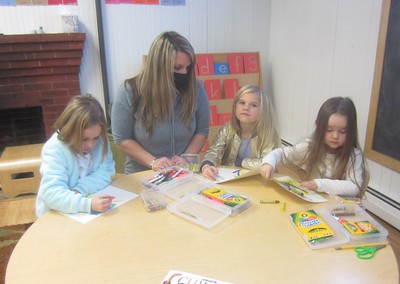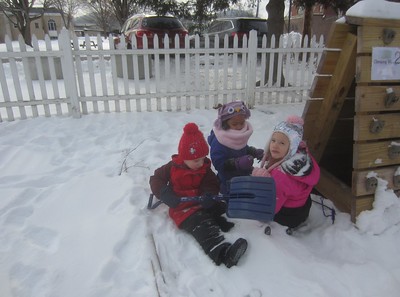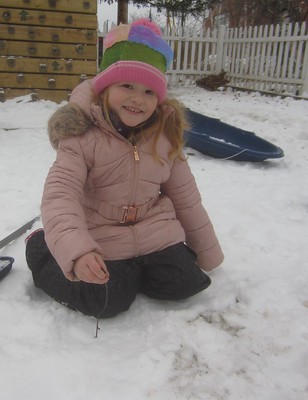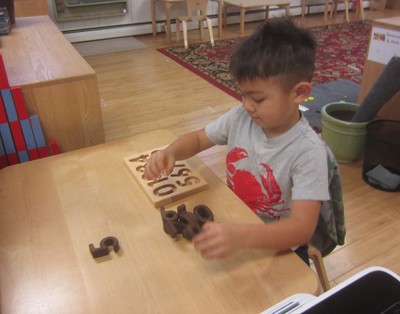As winter arrives, all living things adjust and adapt to the changes in daylight and weather. In the fall we studied how plants adjust and change and are now delving into how we as people and the animals around us adapt. We are making up a song to help us share our learning, called “What do we do when winter comes?”
For art on Monday the children used pastels to color on a paper, then flipped that paper over and drew on the back, transferring the pastel onto a second piece of paper, leaving the imprint behind.
We celebrated a sixth birthday with the newest birthday girl, who celebrated at home last month. She told us she was born in the month of December, in the season of fall (almost winter), and then she orbited the sun 6 times while we counted out the years. Happy Birthday 6 year old!
What do we do when winter comes?
What do we do when winter comes?
What do we do when winter comes
When the cold and snow arrive?
We put on layers to keep us warm
We put on layers to keep us warm
We put on layers to keep us warm
When the cold and snow arrive.
We discussed what happens to animals during hibernation. Their heart beats reduce to 4 or less beats per minute, for some stopping all together, and their breaths also reduce or stop. Frogs burrow down into the mud and freeze, ice crystals forming in their blood, then thaw again in spring. We learned that there are true hibernators, such as frogs, but many hibernators actually go into a state of torpor, where they will wake up several times during the winter to eat and expel waste. Bears are not true hibernators. They go into torpor.
What do bears do when winter comes?
What do bears do when winter comes?
What do bears do when winter comes
When the cold and snow arrive?
They eat lots of food to store up energy.
Find a den and snuggle us safely.
Go into a state of torpor
When the cold and snow arrive.
We played animal charades. The children chose an animal, acted it out, and answered questions others asked to help them make an educated guess, such as What color(s) are you? What do you eat? Do you have hair or fur? We saw a tiger, a bear, a unicorn, a cat, some bobcats, and several other animals.
The narrators practiced their lines for Woodland Stone Soup.
During sign language with Rose, after practicing our letters and “The More We Get Together” we learned the signs for all the animals in Woodland Stone Soup. We learned raccoon, chipmunk, mouse, groundhog, chickadee, woodpecker, bee, bear, (deer to introduce moose), moose, rabbit and fox (which wasn’t in our story but we wanted to know anyway). Ask your child to show you how to make some of these signs.
Susan showed the children how different animals move and walk, and everyone had fun flying like birds, waddling like raccoons, galloping like hares, bounding like frogs, and walking like deer.
Kindergarteners had a busy week learning the letter Ii, which they made out of ice, and will begin building an Inuit Igloo out of ice blocks next week. They used little icicle pieces to make winter fairy houses. They had several days to add to their fence timeline and for the 70th day they did lots of skip counting and addition work, using and working on the patterns they are learning.
During remote schooling on Friday, children learned all about chipmunks and how they dig out burrows with lots of rooms, just like our houses. They have a kitchen where they store their food, a bedroom where they sleep, called a nest, and even a bathroom where they expel waste. They played some chipmunk games where they gathered up food then charted and compared what they collected, and they designed their own chipmunk burrows.












































































